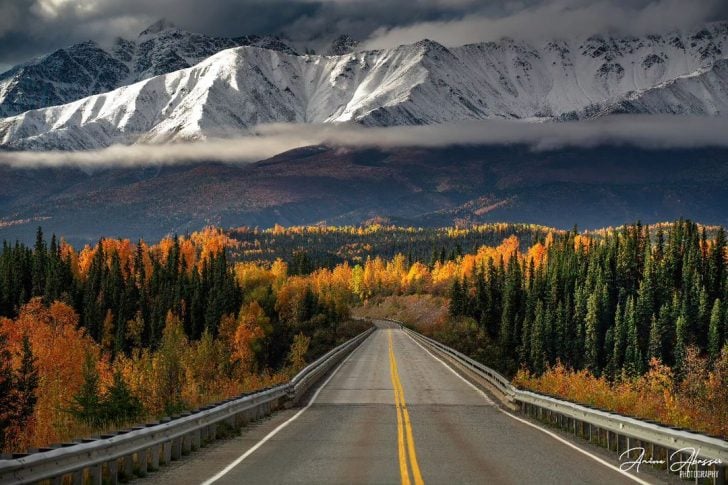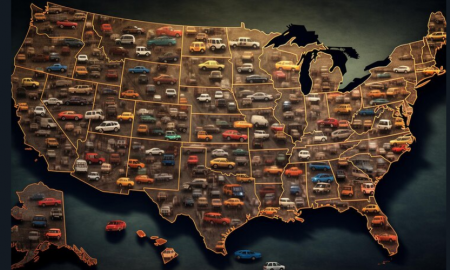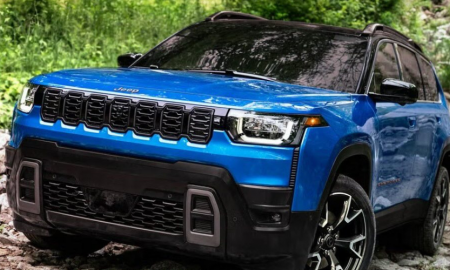
Can You Drive to Alaska? A Quick Guide to Navigating the Alaska Highway

Can you drive to Alaska? Driving to Alaska is a dream for many adventurers, offering a chance to explore some of the most stunning and untamed landscapes in North America. The journey is as much about the experience as the destination. This comprehensive guide will explore everything you need to know about navigating the iconic Alaska Highway, ensuring your trip is safe, memorable, and well-prepared.
Can You Drive to Alaska?
Yes, you can drive to Alaska, and one of the most popular routes is the Alaska Highway. This iconic road, known as the Alcan Highway, stretches 2,224 kilometers (1,382 miles) from Dawson Creek in British Columbia, Canada, to Delta Junction in Alaska. It’s a journey through some of North America’s most breathtaking and remote landscapes, offering a unique and adventurous experience.

@amine_abassir | Instagram | You can drive to Alaska, and one of the most popular routes is the Alaska Highway.
Preparing for the Drive
Driving the Alaska Highway requires preparation. The road is mostly paved or chip-sealed, but the terrain can be challenging, especially during certain seasons. Travelers should prepare for varying weather conditions, potential road construction, and long stretches between services. Ensuring your vehicle is in good condition and packing emergency supplies like food, water, and extra fuel is essential. Staying updated on road conditions is also crucial for a safe journey.
The Route: What to Expect
The Alaska Highway begins in Dawson Creek, British Columbia, and passes through the Yukon Territory before reaching Alaska. The road is open year-round, though conditions can vary dramatically. The highway is bustling with tourists in the summer, while winter can bring icy roads and fewer services available. The route offers stunning views, wildlife sightings, and the opportunity to experience the wilderness of the north.
Crossing Borders: Do You Need a Passport?
Since most of the Alaska Highway runs through Canada, travelers need to know border crossing requirements. A valid passport is necessary for entering Canada, and travelers should check for any additional requirements, such as visas or travel restrictions. The border crossings between the U.S. and Canada are generally straightforward, but it is wise to check for the latest updates before your trip.
Driving Conditions on the Alaska Highway
The Alaska Highway is mostly paved, but drivers should be prepared for rough patches, large bumps, and occasional construction zones. Road conditions can change quickly, so it’s important to stay alert and drive cautiously. Many sections of the highway are chip-sealed, which can be dusty, especially in dry weather. Drivers should always keep their headlights on to increase visibility, particularly when encountering dust or low-light conditions.
Highlights Along the Way
Travelers on the Alaska Highway will pass through some incredible natural landscapes and unique towns. The route takes you through the heart of the Yukon, with stops like Whitehorse, the capital of the Yukon Territory. Wildlife like moose, bears, and caribou are commonly seen along the road. The journey also offers the chance to experience the Northern Lights, especially if traveling during the darker months.

@toasteronwheels | Instagram | Travelers on the Alaska Highway will pass through some incredible natural landscapes and unique towns.
Essential Tips for a Successful Trip
When driving the Alaska Highway, it’s important to plan your stops and fuel up whenever possible, as services can be few and far between. Always have a map on hand, and consider downloading offline maps, as cell service can be unreliable in remote areas. It’s also recommended to check the weather forecast regularly, as conditions can change rapidly, affecting road safety.
More inDriving
-
`
Adults in Ohio Face Stricter Rules to Obtain Driver’s License
Ohio has passed a new law that will change the way adults under 21 get their driver’s licenses. Signed into law...
July 31, 2025 -
`
Gen Z Craves Career Guidance, But Their Parents Are Struggling Too
Gen Z is stepping into the future with curiosity and ambition—but they’re not doing it alone. A growing number of teens...
July 25, 2025 -
`
Do Car Insurance Companies Offer Pay-As-You-Go Plans?
Car insurance premiums often feel unfair to people who rarely drive. Yet, most traditional auto policies still charge a fixed monthly...
July 17, 2025 -
`
Why the Koenigsegg Sadair Spear Is the Ultimate Hypercar Beast
Koenigsegg has revealed a new beast—the Sadair’s Spear. Tuning its focus on raw performance and brutal speed, this hypercar marks the...
July 11, 2025 -
`
Which States Have the Safest—and Riskiest—Drivers in America?
Driving safety isn’t just about skill. It’s also about location. A recent nationwide report shines a spotlight on where drivers are...
July 4, 2025 -
`
How to Save on Tesla Car Insurance Without Compromising Coverage
Owning a Tesla often brings savings on fuel and a futuristic driving experience, but the conversation changes quickly when it comes...
June 26, 2025 -
`
10 Weird Cars That Turned Heads and Won Hearts
Some cars turn heads with speed, others with luxury—but a rare few grab your attention simply by being delightfully strange. From...
June 20, 2025 -
`
Next-Gen Jeep Cherokee Expected to Arrive by Late 2025
After a break of two years, Jeep is prepared to relaunch the Cherokee brand. The automaker confirmed the return with fresh...
June 12, 2025 -
`
9 Tips to Make Night Driving Safer and Less Frightening
Once the sun dips below the horizon, driving becomes more than just a commute—it becomes a challenge. Limited visibility, harsh glares,...
June 6, 2025















You must be logged in to post a comment Login